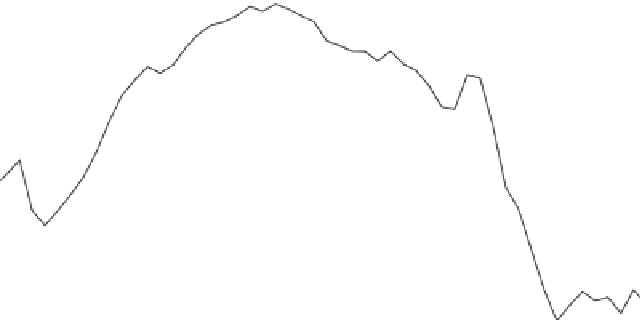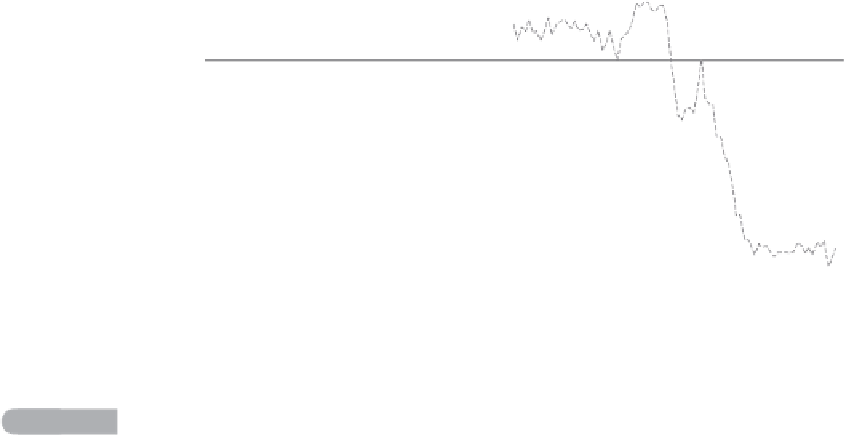Geoscience Reference
In-Depth Information
-20
-10
0
10
20
-380
-400
-420
-440
-460
390
400
410
420
430
Age (thousands of years before present)
Fig. 4.11
TheregionaltemperatureofthepresentHoloceneinterglacial(brokenline)superimposedontheone
followingTerminationV(solidline)asrepresentedbythechangeinAntarcticice-core
2
H.Thetophorizontal
timescalerepresentsthatofthecurrentinterglacialtothepresent(0)andthebottomtimescalerelatestothe
interglacialfollowingTerminationV.Thepositioningofthesuperimpositionisarbitrarybutanalignmenthas
beenmadebetweentherespectiveglacialterminations.Ifourinterglacialandthatoftheonefollowing
TerminationVcanbeconsideredsimilar(inMilankovitchterms)thenthesuperimpositionsuggeststhatwe
areroughlyhalfwaythroughourcurrentinterglacialfromEPICA(2004).Reproducedwithpermission.
Even before the 2004 EPICA cores we knew that not all interglacials were the
same, especially the current Holocene and previous Eemian interglacials. First, the
present Holocene interglacial appears to be more climatically stable; climatic stability
has been found during the previous Eemian interglacial in France (Rioul et al., 2001)
and Greece (Frogley et al., 1999) according to a number of biological palaeocli-
matic indicators, but less so elsewhere. Second, ocean circulation during the Eemian
appears to be have been different (Hillaire-Marcel et al., 2001), which may explain
the stability contradiction. Third, the early Eemian saw a period of warmth that
was significantly warmer than the early Holocene. Finally, Milankovitch theory sug-
gests that there was greater seasonality in the Eemian, with warmer summers and
cooler winters. There is evidence for this, such as from coral oxygen-isotope climatic
indicators from the Middle East (Fells et al., 2004). One of the main reasons for
the differences between the Eemian and Holocene interglacials is that although the
Milankovitch curve insolation climatically forces interglacials, its various contribut-
ing orbital factors can combine in a number of ways.
Therefore, early in the 21st century, when the EPICA ice-core data from previous
cycles became available, the fourth interglacial before ours - beginning 420 000 years
ago - was preferred for comparison with the Holocene (EPICA, 2004; Figure 4.11).














































































Search WWH ::

Custom Search